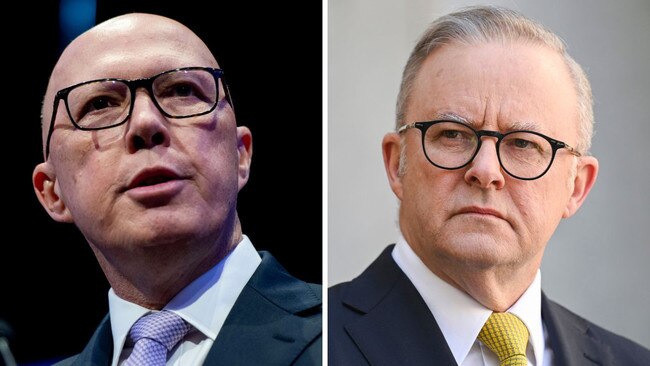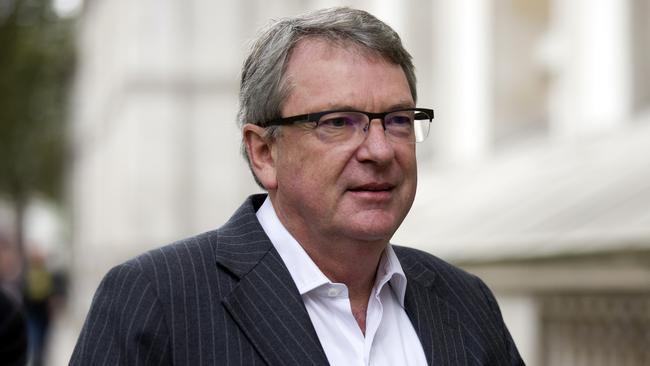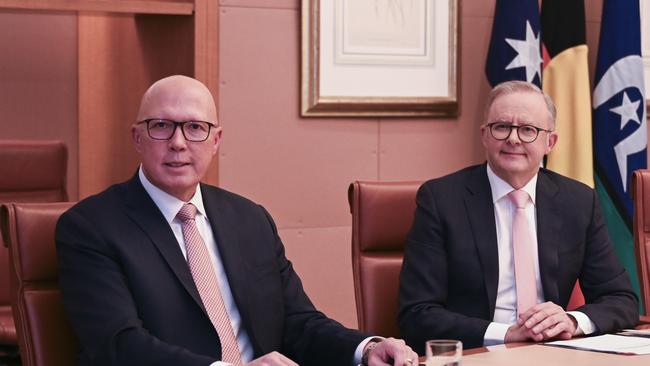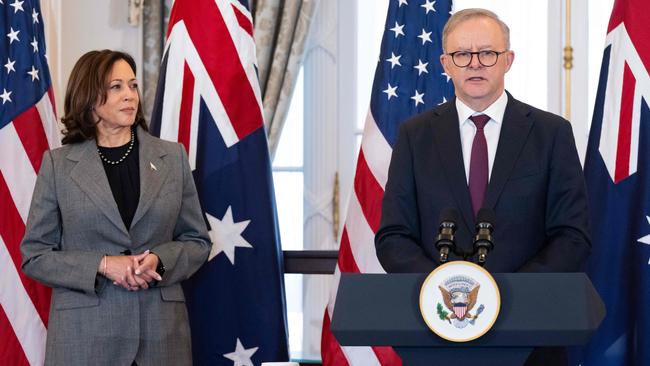Mainstream v elites chasm widens ahead of federal election fight
The widening gulf between Australia’s elite and mainstream classes is carving out a ‘two-speed electorate’, forcing Anthony Albanese and Peter Dutton to shore-up support among splintering voter bases in previously safe ALP and Coalition heartlands.

The widening gulf between Australia’s elite and mainstream classes is carving out a “two-speed electorate”, forcing Anthony Albanese and Peter Dutton to shore up support among splintering voter bases in previously safe ALP and Coalition heartlands.
While the great divide is not as pronounced as in the US, where voters will head to the polls next week, targeted polling of 4172 Australians reveals splits between elites and non-elites on issues including migration, trust in government, climate change and leadership.
New research by leading pollster CT Group, which mirrors similar electoral projects in the US and is being driven by the firm’s executive chairman and co-founder Lynton Crosby, found the gaps between mainstream Australia and elites were growing, with lower-income voters expressing greater frustration and pessimism.
In a rare, wide-ranging interview with The Weekend Australian Magazine this Saturday, Sir Lynton – who built election-winning machines around John Howard, David Cameron and Boris Johnson among others – warned business leaders and politicians needed to stop selling messages through the elite lenses of their own staff to succeed in the long term.
“Politicians and business leaders need to properly understand the audience to which they’re communicating … and not to see things through the prism of the person communicating,” Sir Lynton said.
“A lot of people would say: ‘I didn’t meet anybody who supported Brexit’ or ‘I didn’t meet anyone who opposed the voice’ and that’s because you’re getting that disconnect between political, business, media and advertising leadership and the broader audience.
“There’s a values disconnect and values are the most powerful motivator of people. And if you can connect with people at a values level, then you can be persuasive.”

The online survey, conducted from October 1-16, split respondents into mainstream and elite voters. The elite group consisted of voters with a postgraduate degree, earning more than $120,000 (household income) and living in metropolitan areas. The breakdown in voters was 10 per cent of elites versus the rest.
Asked whether gas, meat and electricity should be strictly rationed in response to climate change, mainstream voters were significantly more opposed than the elite class.
On migration, almost 60 per cent of mainstream voters said immigration numbers should be reduced compared with 39 per cent of elites. There was also a significant difference on whether migration “greatly improves the country”, with 58 per cent of elites agreeing compared with 37 per cent of mainstream Australians. Almost half of mainstream voters believe immigration “fundamentally changes the country in a way I don’t support”.
Questioned about the national direction, elites were significantly more likely to believe Australia was heading in the right direction, compared with more mainstream voters feeling the country was heading in a seriously wrong direction.
In relation to personal finances, elites on balance saw their situation as marginally improving over the next year, while the majority of mainstream voters believed theirs would get worse.
Twice as many mainstream voters were looking for change in leadership over stability, while elites had split views. There is a greater distrust of government among mainstream Australians compared with elites, who had more trust in government and the public service. While elites dominated public debate over a range of issues and had greater trust in academics and policy experts, the mainstream did not.

CT Group Australia managing-director Catherine Douglas said the results revealed a “tale of a two-speed electorate”. “Mainstream voters are feeling left out and frustrated, which is fuelling a strong mood for change,” Ms Douglas said. “There is a group of higher-income, highly educated, metropolitan ‘elites’ who believe the national outlook and their personal financial situation are improving. In contrast much of mainstream Australia feels a sense of decline and misalignment with what they are reading, hearing and seeing.
“There is some correlation between ‘elites’ and the left and ‘mainstream’ and the right in Australia; however, this is not exclusively the case. There is still plenty of contested territory for both major parties to shore up their mainstream voter bases. This structural change in the electorate has likely reduced loyalty to the established political parties.”
A report published by the Committee to Unleash Prosperity in January, titled Them vs. U.S., amplified the class divide trend ahead of the November 5 US election and found that “on a variety of economic, social, and political issues, there exists a wide gap between how the top 1 per cent – the Elites – think things should be and how the rest of America looks at them”.

The study revealed 74 per cent of elites believed they were financially better off today compared to 20 per cent of mainstream US voters. In stark contrast to the rest of the country, 70 per cent of elites trusted the government to “do the right thing most of the time”.
Ms Douglas said structural electorate changes were likely why voters were looking to independents, minor parties or anti-Establishment candidates “to vent frustration”. “This trend has consequences for anyone in a leadership position, whether in politics or business,” she said. “It is important for leaders to understand that their perspectives and those of individuals around them are very likely at odds with the mainstream population.”
For the first time in history last weekend, the Liberal National Party won the Labor stronghold seats of Rockhampton and Mackay at a Queensland election. Even at the ALP’s lowest ebbs during the Joh Bjelke-Petersen era and Campbell Newman’s 2012 landslide, Labor still held on to the central Queensland seats.
A recent example of shifts among elites was the 2022 federal election rout of the Liberal Party by teal independents in blue-ribbon seats. Mr Albanese – who is facing threats from the Greens in Melbourne, northern NSW and inner-city Brisbane and the Coalition in outer-suburban and regional seats – is under pressure to lift Labor’s appeal across Middle Australia and re-engage disillusioned blue-collar workers. Additional cost-of-living measures expected ahead of Jim Chalmers’ mid-year budget update in December are expected to target lower-income voters.
In the wake of the 2022 election defeat, Mr Dutton and the Coalition have shifted attention to outer-suburban and regional seats, in the hope of offsetting falling support in inner-city seats. Coalition seats considered potentially vulnerable to teals and independents at next year’s election include Bradfield, Wannon, Cowper, Groom, McPherson and Forrest. Labor-held outer-suburban or regional seats targeted by the Coalition include: McEwen, Aston and Corangamite in Victoria; Lyons in Tasmania; Gilmore, Robertson, Dobell, Macquarie and Paterson in NSW; Tangney, Hasluck, Pearce and Cowan in Western Australia; Boothby in South Australia; Blair in Queensland; and Lingiari in Northern Territory.





To join the conversation, please log in. Don't have an account? Register
Join the conversation, you are commenting as Logout